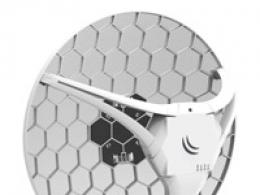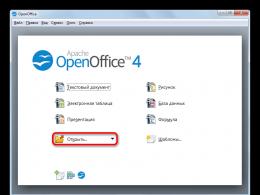Where are iphone backups stored in itunes. How to open and view iCloud backup
Despite the fact that Apple encourages iPhone owners to create backups in cloud storage not everyone takes advantage of this opportunity. Many users prefer to act the old fashioned way. Local copies are created using iTunes and stored on your computer. This method eliminates the need to use the Internet, but at the same time increases the dependence on the reliability of PC components. Fatal OS error or malfunction hard drive may result in irreversible data loss. You can protect yourself from unpleasant surprises if you know where the iPhone backup is stored on your computer.
and backups
iTunes has been and remains the standard program for working with "apple" smartphones on macOS or Windows. It can be connected to a PC any iPhone: 4S, 5, SE, 6, 7, 8 or X. The format for storing backups that will be created is the same for all compatible operating systems. Thanks to this, they can be transferred from Mac to computer under Windows control and back without editing. The choice of storage location is made by each user the first time they connect to iTunes. After that sync mobile device with PC or cloud can be wirelessly.
Let's take a closer look at where to find local copy files on different operating systems.
Mac computers
On computers manufactured by Apple, ready-made backups are stored in the Libraries area, which is protected from direct user access. You can quickly find them directly from the iTunes settings.
IN top panel status, click on the name of the program. In the drop-down menu, select the item marked in the screenshot.
In iTunes settings, go to the "Devices" tab. By selecting the backup of interest, we call context menu. The item shown in the following photo allows you to open a protected area or delete an unwanted copy.
The folder where the backup is stored has an alphanumeric designation. The content is encrypted, so it cannot be viewed. The found directory can only be saved to external media or copied to another computer.
Windows computers
There are several ways to install iTunes on a PC. Classic implies the use of the installation package of the program. On Windows 10, you can use the Microsoft Store for this purpose. The chosen installation option determines where the copy files will be located.
Classic setup
The installation package is suitable for use on any Windows versions. Backups created in iTunes installed in this way will be saved to a directory that is hidden by default. In the OS settings, you can make it visible, but we use a different access option.
We call the menu "Run" with the keyboard combination Win + R. Enter "%%" in the text box. Thus, we can find and view backup files directly without having to navigate through the menu items.
An Explorer window will open, in which we need to find the directory "" marked in the screenshot.
We sequentially open the folders nested in it, following the path marked with a frame. The iPhone backup we need will be stored in the "" directory. The folder with it is indicated by an arrow in the screenshot.
Windows 10
When using iTunes installed from the app store, iPhone backups will be in a different directory operating system. To find them again, use the "Run" menu.
Enter the command "% userprofile%" in the text field.
In the Explorer window this time you need to look for the directory "Apple".
Sequentially opening subfolders, we find the one indicated in the screenshot. It, like last time, will be placed in the directory "".
Copy management
You can copy a backup from another computer to the storage locations described above. In this case, the data will be automatically added to iTunes.
Open the program and click on the "Edit" tab in the control panel. In the drop-down menu, go to the “Settings” item marked in the screenshot.
Switch to the "Devices" section. If you hover your mouse over the list of backups, you can view general information about smartphone in the pop-up menu. When another PC was used to create a backup, the option can be useful. When selecting files contained in the list, the button marked with the number "three" automatically becomes active. Thus, based on the information about the data contained in the backup, you can make a decision and delete files that are irrelevant for storage.
Finally
By following these tips, you can find a local iTunes backup on a computer with any compatible operating system.
Video instruction
See the video below for more details on how to perform the steps described.
Instruction
A backup copy allows you not to lose important information accumulated over the years on your phone. After all, sometimes it’s not so much a pity to lose the phone itself, but all the contacts or photos stored in its memory. But you can reduce your grief significantly by saving everything at regular intervals and knowing where the backup files are located. You can copy everything: entries in the planner, contacts on the phone, photos and videos, and even data on plastic cards. A backup is an archive containing almost all information, including not only regular files, but also phone settings that were convenient for you. A copy is used in case of replacement of the phone, its theft or loss, as well as after flashing your device for data recovery. That's why it's so important to back up every time you connect your iPhone to iTunes. Backup to iCloud is performed automatically when the device is connected to a power source, to WiFi networks or blocking.
Most often, backups are made through iTunes. The copy can be either open or password protected. She is stored in system folders on the computer's hard drive. If the restored iPhone is marked as new in the settings, then synchronization will automatically start and a new backup will be created. Depending on the type of operating system, the path to the required archive will be different. The windows operating system is known for its quite big amount types. For example, for the XP version, in order to find the archive, you need to go to drive C. Then go to the following path: Documents and Settings\user_name\Application Data\Apple Computer\MobileSync\Backup. For Vista systems the beginning of the path is similar, but after going to the user folder, you need to go along the path AppData\Roaming\Apple Computer\MobileSync\Backup. Operating Windows systems 7, 8, 10 path is completely identical to the OS Windows Vista.
The backup copy is a regular folder, the name of which consists of 40 characters, including numbers and English letters. This folder contains quite an impressive number of files that do not have any extension. Each file has a name, which also consists of 40 characters. These backup files can only be opened in iTunes. There are simply no other ways.
If you have several devices with a branded "Apple", and for each device you make a backup copy in a timely manner, then sooner or later the question may arise which folder on the computer is for which device. Finding the answer is pretty easy once you know the basics of programming. To understand, you need to find the Info.plist file in the list and open it in any text editor. The option to open the file in a regular notepad is also suitable. You will see a large list with various tags. You will need to find the key tag that points to the product name. It will contain information about the device for which this backup was created. For example, key Product name /key. Below the line you will see the name of the device, enclosed in a functional string tag. For example, for the fifth model, you will see the following line: string iPhone 5s /string. In a text editor, the tags themselves will be placed in brackets. In the lines below you can see the version of iOC, the serial number of the device and its IMEI. In addition, in the Info.plist file, you can see information about the date this backup was created, ID number, phone number, and more.
iTunes creates a backup on your iPhone during the sync process. In the future, you can use this copy to restore the content that was on the device at the time of synchronization. The copied data can be transferred from one device to another. iOS 4 and later uses encrypted backups. In this case, passwords and keys are also transferred to the new hardware. If the password is forgotten by the user, then it should be completely restored software, and when iTunes asks you to choose the type of copy, you must select "Set up as a new device." Your password-protected iPhone will prompt you to enter your password when connected to iTunes. After the user enters the password, the device will be defined as authorized and no additional password will be required before synchronization.
When you have found the backup folder, it is advisable to move it to another location. After all, the system disk is not the best place to store such important information. Firstly, this folder can weigh tens of gigabytes and storing it on the C drive will significantly reduce the performance of the computer. If suddenly your operating system flies, then along with it will disappear and backup files. In order not to degrade the quality of work on the computer and reduce the possible loss of files to a minimum, it is worth moving the folder with the copy or to another HDD, or to another section of the computer. But it is impossible to transfer it in the classical way ctrl+c and ctrl+v. Transferring is possible only through symbolic links. They are formed in file system as special file, which has only a text string, and is treated as a path to the requested file.
iTunes is a useful and versatile application. It helps the owners of Apple products to work with information on smartphones and tablets. For example, recover data. To do this, there is a function that allows you to create backups. Without much difficulty, you can return this or that information to your iPhone or iPad at any time. Fast, simple, convenient! Only sometimes it is necessary to find a specific package of information that iTunes worked with. Where are backups stored? How are they created? What should every user know about?
Windows base
The operating system with which the user works will play a huge role. The fact is that on different operating systems, data is recorded and stored at various addresses.
What does iTunes offer? Where are user information backed up? For example, in Windows. The majority of mobile device owners work with this operating system.
To avoid confusion, you can use the following search recommendations:
- Windows XP. It doesn't happen very often in practice, but it does happen. You need to go to "My Computer". Next, follow to hard section disk where the operating system is installed. There go to the following address: Documents and Computer. Here open the MobileSync folder. iTunes data backups will be located in BackUp.
- Windows vista. To date, work in this OS has practically lost its relevance. It will require you to go to Documents and Settings/AppData/Roaming/Apple Computer. All other searches will be exactly the same as in the previous case.
- Windows 7-10. The most common scenario. It is under the control of these versions that iTunes is most often launched. Where are user backups stored? In the same place as in all previous cases. The only difference is that to open AppData, you will have to initially follow the path: C: / Users / username. The BackUp folder located in MobileSync is what you need.
In fact, there is nothing difficult in the search process. Only some users note that sometimes "Backup" is missing. What to do in such a situation?

Lack of BackUp
The main thing is not to panic. The fact is that the problem under study occurs in many users. There is no need to be afraid of it, everything can be fixed in a few mouse clicks.
The problem lies in Windows settings. In fact, there is a BackUp folder, it is simply hidden from the user's eyes. To find it at the addresses indicated earlier, you must:
- Go to "Start" - "Control Panel".
- Select "Folder Options" - "View".
- Customize the display of hidden files and folders. To do this, check the appropriate items and save the changes.
After the actions taken, all hidden documents on the computer will become available to the user. So, "Backup" can also be found.
For Mac
Some users do not work with Windows, but with MacOS. iTunes is perfectly combined with a similar operating system. But it also needs to know where to go to discover backups with human data.
In general, the process is not much different from previously proposed algorithms. The necessary folder from iTunes is located in MobileSync. You can find it in: user/library/Application Support.

Accordingly, it is here that the application changes? This question won't be a problem anymore. You can literally find the desired document in just a few clicks.
About Compatibility
The relevant information is stored in a folder with one copy or another. To check the device version that is compatible with the information, you need:
- Open BackUp and go to the folder with the required data package.
- Find the Info.Plist file. It opens with a text editor. For example, through Notepad in Windows.
- Carefully study the contents of the document. After
product name there will definitely be a mention of the version of the smartphone on which the copy of the data will start.
All these actions can be mastered even by a novice user. Was made in iTunes Backup copy? The location of the relevant document is now known. And even how to check its compatibility, too.
Ways to create a copy
Before you can look for backup data, you need to create it. Not everyone knows about this procedure either. How to create a backup iTunes help? Bringing the idea to life will not take much time. It is enough to follow a small instruction.
Backup via iTunes works like this:
- Download and install latest version ITunes.
- Connect your mobile device to your computer with a wire.
- Launch the previously installed application.
- How to create a backup in iTunes? Select the connected device in the menu, go to the "Overview" section.
- Select the "Make a copy now" button from the menu.
- Click on "OK" after the process is completed.
This is the simplest solution. You can also work with iCloud or with third party applications. But this is not the best solution. After all, an iPhone backup via iTunes is created in just a few clicks!

Results and conclusions
From now on, it is clear how to work with backup data on iPod or iPhone. Finding them on a computer is no longer difficult. Each user is able to bring the idea to life.
iPhone backup via iTunes is restored if necessary. It is recommended that you do not store such documents on your computer. This is a kind of data protection method. It is advisable to copy all copies of the iPhone to removable media.
I think everyone had such a situation when you bought an iPhone for yourself, and then decided to change it for another or flash it, then you need to make a backup copy, which does not always work out.
In this article, we will explain: where does iTunes store iPhone/iPad backups on Windows computer and Mac.
Where does iTunes store iPhone and iPad backups on Windows and Mac computer
The main method for backing up iPhone and iPad is iTunes. With it, you can create a regular or password-encrypted copy of the data, which is located:
1.Windows
Windows XP: C:\Documents and Settings\username\Application Data\Apple Computer\MobileSync\Backup\
Windows Vista: C:\Documents and Settings\username\AppData\Roaming\Apple Computer\MobileSync\Backup\
Windows 7, 8, 10: C:\Users\username\AppData\Roaming\Apple Computer\MobileSync\Backup\

Note: if the folder is not displayed, then go to "Control Panel -> Folder Options -> View" and turn on the display of hidden files and folders and check the box "Show hidden files, folders and drives".

2. MacOS X: \Users\username\Library\Application Support\MobileSync\

A backup copy is a folder with a name of 40 characters (letters and numbers), which contains a large number of files without an extension (English filename extension). File names also consist of 40 characters. Other than iTunes, backup files will not be recognized.

How to determine which iPhone/iPad a given iTunes backup was created for
You can find information for which device the backup was created using the file " Info.plist”, which is located in each copy folder.
And so, to find for which device the backup was created:
1. Open the "Info.plist" file in any text editor, Notepad, for example.
2. In the search for the document (Ctrl + F), find the line "Product Name".

3. Information about the device model is located between the tags "": "iPhone 5s". This means that in the folder with open file there is an iPhone 5s backup. Also, the device can be identified by serial number or IMEI. The data is under the corresponding lines (Serial Number and IMEI).
The Info.plist also contains information about the date the backup was created, device ID (iPhone 5s is iPhone6,1), phone number (for iPhone), iOS versions, serial number, IMEI and much more.
1. The size of the backup file can be larger than 10 GB. This can affect both the memory of the hard drive and its performance. And if you still have backup copies of other devices, then store them on system drive may not be safe.
2 In case of damage to any Windows file or a software glitch in the operating system, which can result in data loss when the computer restarts and you need to reinstall Windows.
And so, in order to protect your system from failure and occupying a large number memory, you need to move the backup to another hard drive.
So what's the right way to do it?
How to Transfer iTunes Backups to Another Drive Properly in Windows 7, 8 and 10
1. Close iTunes
2. Copy or move the C:\Users\username\AppData\Roaming\Apple Computer\MobileSync\Backup\ folder to another drive (replace the username with your own). Just in case, copy the folder somewhere else.

4. Run the command line (command line handler) "cmd.exe" with administrator rights ("Start" -> "Search programs and files" -> "cmd" ->


5. Enter the command: MKLINK /D "from" "to"
Example:
mklink /d "C:\Users\Alexander Varakin\AppData\Roaming\Apple Computer\MobileSync\Backup\" D:\iTunes\Backup

6. Example of command execution.


How to Transfer iTunes Backups to Another Drive in Windows XP
1. Close iTunes
2. Copy or move the C:\Users\username\AppData\Roaming\Apple Computer\MobileSync\Backup\ folder to another drive (replace the username with your own). Just in case, it is better to copy the folder somewhere else.
3. Delete the "Backup" folder on the system drive (from where the backups were moved).
5. Run the command line "cmd.exe" with administrator rights ("Start" -> "Search programs and files" -> "cmd" -> Right click click on the context menu on the file "cmd.exe" and select "Run as administrator"). The name of the command prompt window must be "Administrator: C: / Windows / System32 / cmd.exe".
6. Enter the command: C:\Path_to_Junction\junction.exe "from" "to" -s,
"from" - the previous location of the "Backup" folder on the system drive;
"where" - a new path to the folder with backups.
Example:
C:\Junction\junction.exe "C:\Users\Alexander Varakin\AppData\Roaming\Apple Computer\MobileSync\Backup\" D:\iTunes\Backup -s
7. Launch iTunes and check for backups in the program settings on the "Devices" tab.
How to Transfer iTunes Backups to Another Drive in Mac OS X
For Mac computers with Reserve copy using a program built into OS X time machine or third-party iBackup and ChronoSync, the issue of the safety of backups is not so acute, but still it will come in handy for someone.
1. Quit iTunes (right-click the iTunes icon in the Dock (https://support.apple.com/en-us/HT201730) and select Quit).
2. In the Finder, press the key combination "Shift + Cmd + G" and in the window that appears in the "Go to folder" field, enter the text: "/Library/Application Support/MobileSync/" and click on the "Go" button (or the "enter ").

3. Copy or move the "Backup" folder to another drive.
4. Launch the Terminal (you can find it using Spotlight or in "Programs -> Utilities").
5. Enter the command:
ln -s /Volumes/your_disk/Backup /Library/Application\ Support/MobileSync/,
where "/your_disk/Backup" is replaced with the path to the new backup folder. You don't have to type the path manually, just drag the desired folder into the Terminal window.
6. After executing the command, an Alias (Shortcut) leading to the backup on another drive will appear in the MobileSync folder.


7. Launch iTunes and check for backups in the program settings on the "Devices" tab.
Transferred backups will be available in iTunes until the next operating system reinstall, after which symbolic links will need to be recreated.
I don’t know about you, but for me, the contents of the memory of my iPhone 5s are much more expensive than the device itself. If you bought it once, you can buy it a second and third time, but accumulated over the years, if possible, then this is not easy to do.
How to transfer iTunes backups to another drive in Windows 7, 8 and 10
- Close iTunes.
- Copy or move the C:\Users\username\AppData\Roaming\Apple Computer\MobileSync\Backup\ folder to another drive (substitute your username). Just in case, copy the folder somewhere else.

In my virtual machine Windows 10 in it is located along the path: C:\Users\le7andr\AppData\Roaming\Apple Computer\MobileSync\Backup\
- Run the command line (command line handler) "cmd.exe" with administrator rights ("Start" -> "Search programs and files" -> "cmd" -> Right-click on the context menu on the file "cmd.exe" and select "Run as administrator"). The name of the command prompt window must be "Administrator: C: / Windows / System32 / cmd.exe".


- Enter the command: MKLINK / D "from" "to"
Example:
mklink /d "C:\Users\Alexander Varakin\AppData\Roaming\Apple Computer\MobileSync\Backup\" D:\iTunes\BackupReplace "Alexander Varakin" with your username. If the path contains spaces (here, Apple Computer), it must be enclosed in quotation marks (""). To avoid manually typing the path, drag the desired folder to the command prompt window. Press Enter.

- Command execution example.

- Launch iTunes and check for backups in the program settings on the "Devices" tab.

How to Transfer iTunes Backups to Another Drive in Windows XP
- Close iTunes.
- Copy or move the C:\Users\username\AppData\Roaming\Apple Computer\MobileSync\Backup\ folder to another drive (substitute your username). Just in case, it is better to copy the folder somewhere else.
- Delete the "Backup" folder on the system drive (where the backups were moved from).
- Download Junction from the link, unzip, for example, to the root of drive "C".
- Run the command line "cmd.exe" with administrator rights ("Start" -> "Search programs and files" -> "cmd" -> Right-click on the context menu on the file "cmd.exe" and select "Run as administrator" "). The name of the command prompt window must be "Administrator: C: / Windows / System32 / cmd.exe".
- IN command line enter the command: C:\Path_to_Junction\junction.exe "from" "to" -s,
- "from" - the previous location of the "Backup" folder on the system drive;
- "where" - a new path to the folder with backups.
Example: C:\Junction\junction.exe "C:\Users\Alexander Varakin\AppData\Roaming\Apple Computer\MobileSync\Backup\" D:\iTunes\Backup -s
- Launch iTunes and check for backups in the program settings on the "Devices" tab.
How to Transfer iTunes Backups to Another Drive in Mac OS X
For Mac computers with a backup function using the Time Machine built into OS X or third-party programs, the issue of the safety of backups is not so acute, but still it will come in handy for someone.
On the Mac computers on OS X, the procedure is slightly simpler:

Transferred backups will be available in iTunes until the next operating system reinstall, after which the symbolic links will need to be recreated.
As you can see, it is not difficult to find a backup a copy of iTunes on a Windows or Mac computer. It is not difficult to move "heavy" backups to another disk (partition or external drive) and associate them with iTunes using symbolic links.
If you have any questions or additions, write in the comments - we will discuss.






